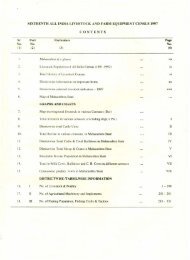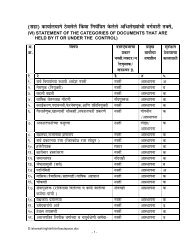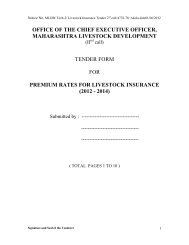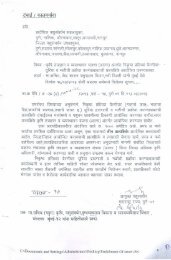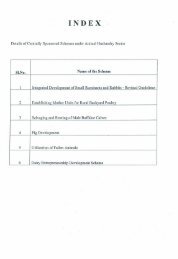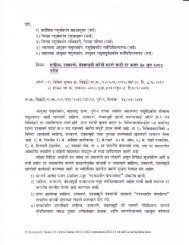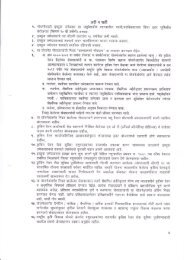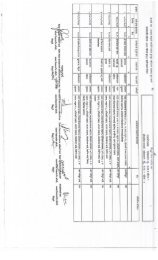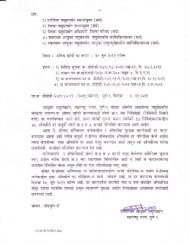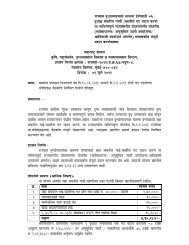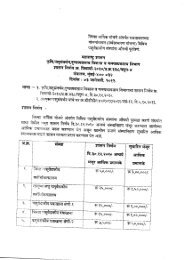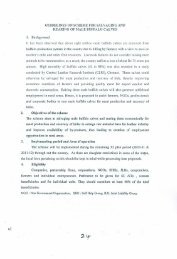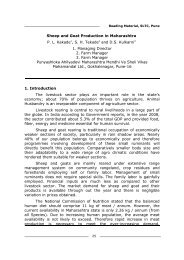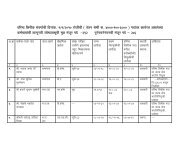Standard Operating Procedures for Bull Management (1088.47 KB)
Standard Operating Procedures for Bull Management (1088.47 KB)
Standard Operating Procedures for Bull Management (1088.47 KB)
You also want an ePaper? Increase the reach of your titles
YUMPU automatically turns print PDFs into web optimized ePapers that Google loves.
2. Supply of potable water at all the time.<br />
a. Water is one of the most important component of nutrients and it should be made<br />
available all the time. The water should be clean, free from organic matter and<br />
potable. The water should be under shade and accessible all the time.<br />
b. Fresh water should be available all the time.<br />
c. River water / pond water should be used after adequate treatment to eliminate<br />
contaminants and biological material.<br />
3. Housing and floor.<br />
Each FSS should have permanent housing arrangements <strong>for</strong> mature breeding bulls along<br />
with facility <strong>for</strong> isolation shed <strong>for</strong> about 4 – 5 bulls. The isolation shed should be about<br />
500 mts. from the main housing of bulls. In addition each FSS should also have facility<br />
<strong>for</strong> quarantine of new bulls, which are to be inducted into FSS. This facility should be at<br />
least Five kilometer away from main housing. All housing facilities should have<br />
arrangements <strong>for</strong> feeding and supply of water.<br />
a. Housing and temperature control<br />
The bulls have to live 24 Hours and 365 days in the housing provided. The type of<br />
housing decides the com<strong>for</strong>t level and quality and quantity of semen production.<br />
The sheds should be in East – West direction to avoid direct sunlight on bulls. There<br />
are reports of testicular degeneration due to intense sunlight on testis / scrotum. In<br />
case the sheds are already in north – South direction, measures should be taken to<br />
provide shade to bulls to protect from direct sunlight. The sheds should be airy and<br />
allow breeze. Trees to protect from hot air during summer should surround the sheds.<br />
There should be top ventilation to allow escape of hot air. In the states where the<br />
climate is hot most of the part of the year, the sheds should have minimum walls and<br />
steel pipe railing should be used <strong>for</strong> better ventilation. There should be provision of<br />
water foggers and fans <strong>for</strong> use during the summer particularly <strong>for</strong> exotic breeds and<br />
buffalo bulls. The fans and water foggers should be operated alternately <strong>for</strong> about 4 –<br />
5 hours / day during summer time. During summer, it is desirable to wash the buffalo<br />
bulls twice a day. The exotic and crossbred bulls can be washed with water on<br />
alternate days to keep them clean. It is recommended to groom the cattle bulls with<br />
coir / nylon brush every day to keep the skin in shining and glowing condition.<br />
Single bullpens having loafing area are suitable and ideal <strong>for</strong> breeding bulls. The bulls<br />
should be kept free. The bullpens should have feeding manger and water trough. Each<br />
bull should have adequate covered area (minimum 10 M 2 ).<br />
In places where the climate is very cool most of the year, the walls are recommended.<br />
However attention should be given to ensure adequate ventilation and avoiding stale<br />
air in the sheds.



